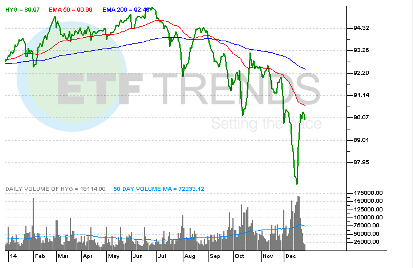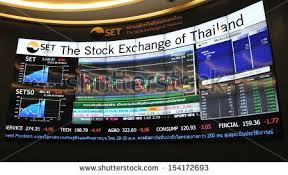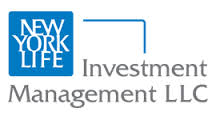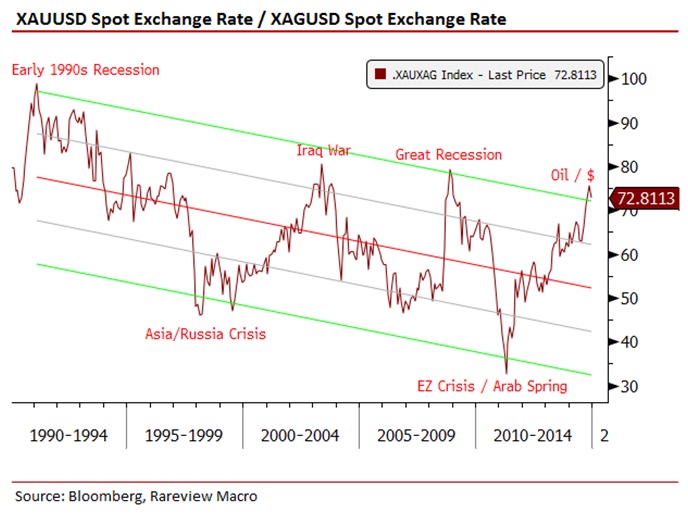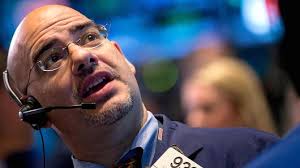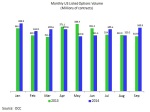“And the nominees are…” MarketsMuse update profiles ETF industry portal ETF.com annual awards for ‘Best Of’ across 25 different categories, with more than 100 nominees. Winnners will be announced at an awards dinner that will take place March 19 at Pier 61 in New York City.
Below please find the extract from the ETF.com announcement.
“….In recognizing the forces that support the growth of the ETF industry, each year at its annual ETF.com Awards Dinner ETF.com recognizes the people, companies and products that are moving the industry forward. The dinner takes place March 19 at Pier 61 in New York City.
The award selection process follows three steps:
- An open nominating process
- A “Nominating Committee” composed of senior members of ETF.com’s editorial and analytics components narrows the nominees to a maximum of five in each category
- A “Selection Committee” of independent ETF experts votes on the winners.
The nominees are:
Category 1: Lifetime Achievement Award
Awarded annually to one living individual for outstanding long-term contributions to ETF investor outcomes, whether from a position of media, regulation, product provider or investor. Previous winners are not eligible.
Nominee No. 1: John Bogle
From an untiring emphasis on the “humble arithmetic” of indexing, to the customer-owned structure of his brainchild, Vanguard, there’s zero doubt that Jack Bogle is perhaps the biggest reason fund fees are falling and getting lower. Even his cranky critique of the perils of over-trading ETFs is, in its way, laudable: He truly wants what’s best for investors.
Nominee No.2: Lee Kranefuss
You won’t find an executive with more ETF-specific “street cred” than Lee Kranefuss. His almost-evangelical belief that the future of investing belonged to ETFs has been crucial to the rise of the industry. Under his direction, iShares grew to be the biggest ETF issuer in the world, and the unrivaled breadth of the company’s product line serves as the perfect metaphor of the power of ETFs.
Nominee No. 3: Burton Malkiel
Burton Malkiel put indexing on the map with his 1973 book, “A Random Walk Down Wall Street.” An enthusiastic proponent of index–based investments and ETFs, this Princeton academic remains engaged in many realms of the investment business, not least at chief investment officer of Wealthfront, the biggest player in the new “robo-advisor” field.
Nominee No. 4: Gus Sauter
During his 25-year career at Vanguard, Gus Sauter saw the firm shift from upstart to the biggest mutual fund company in the world. Sauter’s emphasis on indexing, on thoughtful diversification in asset allocation and on encouraging investors to stick to their plans puts Sauter and his nearly decade-long stint as CIO at the very center of Vanguard’s spectacular rise.
Category 2: ETF of the Year – 2014
Awarded to the ETF that has done the most to improve investor opportunities and outcomes in 2014, by opening new areas of the market, lowering costs, delivering new exposures or otherwise creating better options for investors. There is no requirement on when this fund launched.
Nominee No. 1: Global X GF China Bond (CHNB)
As the first ETF to provide access to China’s onshore bond interbank market, CHNB opened up the third-largest fixed-income market in the world. The fund pulled in nearly $50 million in investor flows in 2014, and offered investors the opportunity to access a relatively high-yielding asset with low credit risk.
Nominee No. 2: PIMCO 25+ Year Zero Coupon U.S. Treasury (ZROZ | C-57)
2014 was supposed to be a year of rising interest rates. Instead, rates plunged, and funds on the edge of the duration spectrum like ZROZ returned nearly 50 percent. As the longest-duration US-bond ETF, ZROZ was well positioned to ride 2014’s surprise rate drop. With a 0.15 percent annual expense ratio, ZROZ allows cheap, efficient access to the longest-term U.S. Treasuries.
Nominee No. 3: Vanguard Total International Bond (BNDX | B-57)
Vanguard broke new ground in the ETF world by offering the first global ex-U.S. broad-market bond fund. While other global-ex U.S. fixed-income funds cover parts of the bond universe—sovereigns or corporates—BNDX covers the entire non-USD investment-grade bond market. Vanguard’s choice to hedge BNDX’s currency exposure reduces the number of risk considerations for U.S.-based investors. At 20 basis points, the fund is very well priced, and quite efficiently run. The fund pulled in more than $2 billion in net inflows in 2014.
Nominee No. 4: Vanguard Total Stock Market (VTI | A-100)
Among the 38 ETFs offering total U.S. stock market exposure, VTI stands out for best representation and exceptionally low costs. With nearly 3,700 constituents, VTI captures virtually the entire investable U.S. equity market. Better still, VTI actually costs less than its published expense ratio of 5 basis points, with an average actual tracking difference versus its index of just 2 bps. VTI covers the entire U.S. stock market, basically for free; it’s hard to argue with that.
Nominee No. 5: WisdomTree Europe Hedged Equity (HEDJ | B-48)
The only nonvanilla ETF to make the top 10 flows list in 2014, HEDJ has captured the attention (and dollars) of tactical investors looking to make a currency-hedged bet on eurozone equities. With the euro on the rocks, its ability to protect against falling currency meant it outperformed non-hedged European equity ETFs by 10-12 percent for the year. HEDJ attracted $4.9 billion of inflows in 2014.
Category 3: Best New ETF – 2014
Awarded to the most important ETF launched in 2014. Note: Importance is measured by the overall contribution to positive investor outcomes. The award may recognize ETFs that open new areas of the market, lower costs, drive risk-adjusted performance or provide innovative exposures not previously available to most investors. Only ETFs with inception dates after Jan. 1, 2014, are eligible.
Nominee No. 1: EMQQ Emerging Markets Internet & Ecommerce (EMQQ | B-48)
As amazing as emerging market funds like VWO, EEM or IEMG are, they do have some conspicuous holes, which EMQQ aims to fill. Investors who want to own all of the emerging markets cannot overlook EMQQ, which will give them access to Internet and e-commerce companies that are typically excluded from traditional indexes because they are listed on the New York Stock Exchange.
Nominee No. 2: First Trust Dorsey Wright Focus 5 ETF (FV | C-23)
FV is a perfect example of how flexible ETFs are. This fund qualifies as a catchy riff on the “smart beta” trend, putting into one convenient, dynamic and tradable fund-of-funds wrapper Tom Dorsey’s popular system of technical analysis. It was the fastest-growing new ETF launched in 2014, pulling in $1.2 billion in inflows.
Nominee No. 3: iShares Core Total USD Bond Market ETF (IUSB | D)
Broad-market bond funds that track the Barclays Aggregate overlook certain corners of the U.S. bond market: High-yield bonds are excluded from the Agg, for instance, as are many internationally issued bonds denominated in U.S. dollars. IUSB offers a broader take on the bond market, bringing extra yield to core bond exposure. It’s also cheap, charging just 0.15 percent a year in expenses.
Nominee No. 4: Market Vectors ChinaAMC China Bond ETF (CBON)
CBON offered U.S. investors access to Chinese debt issued in mainland China for the very first time. With the Chinese market rallying and bond opportunities looking thin elsewhere, this novel exposure is a welcome addition to the mix.
Nominee No. 5: PowerShares DB Optimum Yield Diversified Commodity Strategy (PDBC) This fund isn’t the first of its kind in the commodity space, but it is the cheapest, and that counts for a lot in a pocet of the ETF industry that remains relatively pricey. The fund allows investors to steer clear of cumbersome “K-1” tax forms reserved for futures while still enjoying futures-like exposure.
For the entire announcement from ETF.com, please click here.


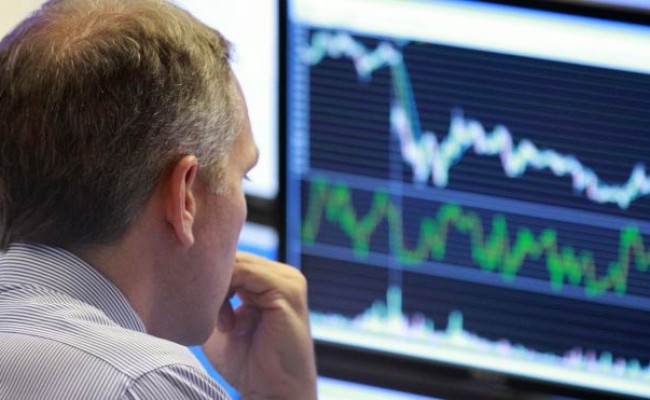
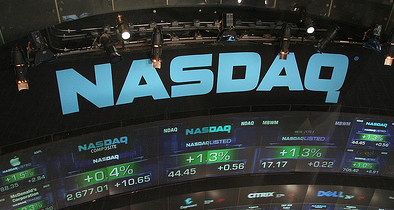

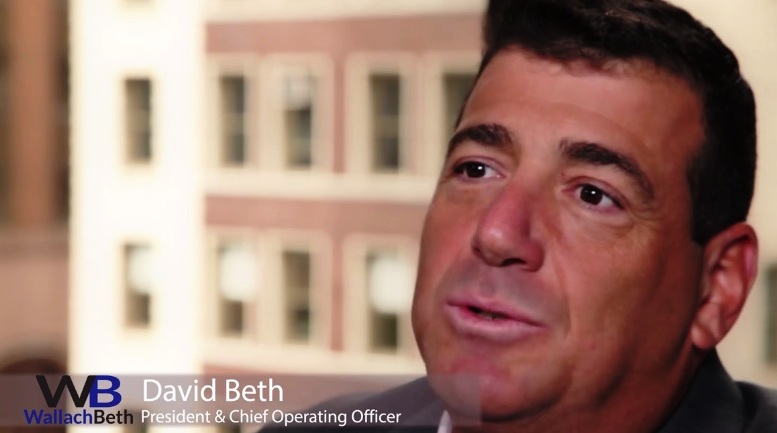
 The buy side is becoming more targeted with sell-side firms, employing a rifle rather than a shotgun approach as liquidity continues to shrink. A big factor behind this newfound independence has been the lessening of liquidity in 2014 in derivatives and fixed income markets, which has forced buy-side institutions to be more resourceful in sourcing liquidity
The buy side is becoming more targeted with sell-side firms, employing a rifle rather than a shotgun approach as liquidity continues to shrink. A big factor behind this newfound independence has been the lessening of liquidity in 2014 in derivatives and fixed income markets, which has forced buy-side institutions to be more resourceful in sourcing liquidity